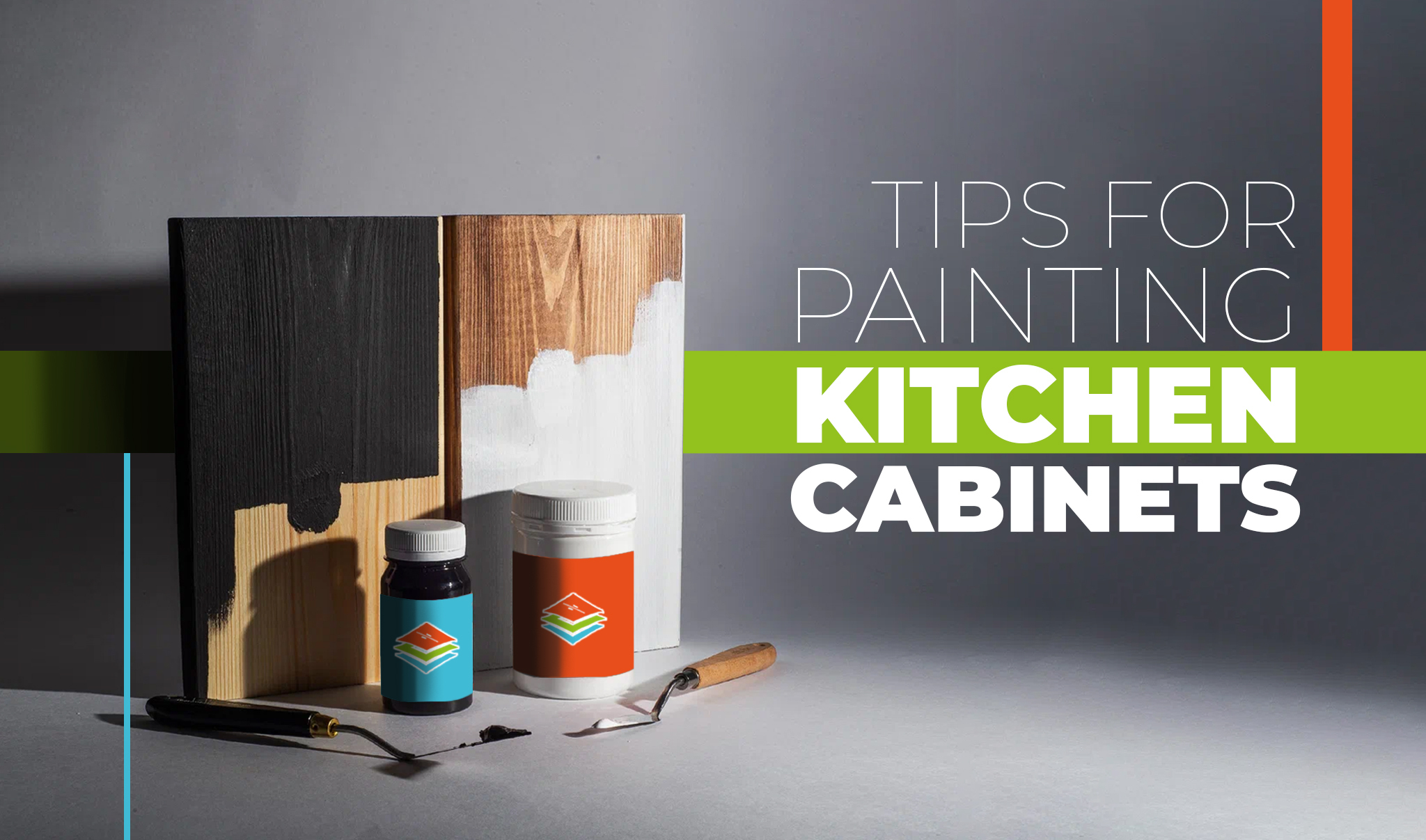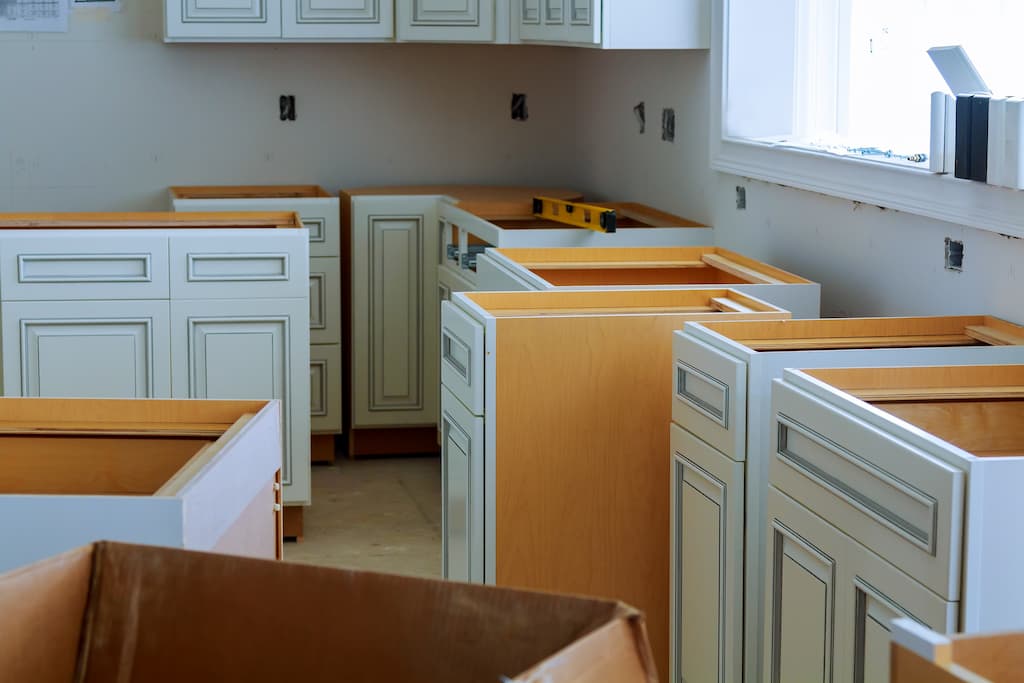Painting kitchen cabinets is a process that requires attention and precision; however, it is a great way to refresh your kitchen. You can opt for a professional or do-it-yourself (DIY) process for painting kitchen cabinets. But with a bit of professional help, you can renovate your kitchen and make it much easier, spending far less time and money than you would spend replacing your kitchen cabinets.
Table of Contents
Toggle1. Researching and Planning Come First
Among the most important tips for painting kitchen cabinets is preparation. Without a proper planning procedure, it is highly possible that you will not get the desired look for your kitchen cabinets once the painting is done. Make sure you do enough research and start accordingly: The first thing you need to decide for painting your kitchen cabinets is the color.
2. Choose The Right Color
First things first, choosing the right color is the most important tip for painting kitchen cabinets. Not only can it enhance your kitchen ambiance, but it also can make your kitchen look modern or traditional and can create a harmonious beauty between your kitchen cabinets and walls. You can follow the trends and choose one of the best cabinet colors for your kitchen cabinets, or you can follow your instincts and choose a color you like.
Creating a contrast between kitchen cabinets and the kitchen wall is a good idea if you want to show your kitchen cabinetry. Especially the colors such as green, red, and blue are perfect choices to make your cabinetry look astonishing and stand out in your kitchen.
On the other hand, you can also change the aura of your kitchen with the proper color. While white or beige are perfect choices for traditional kitchens, black and dark gray cabinetry creates an elegant and sleek atmosphere in your kitchen, demonstrating modernity.
You can also make a unique personal touch to your kitchen by painting your kitchen cabinetry with red, blue, or green colors. These cabinet colors are vivid and will reflect your style and create a warm atmosphere.
3. Choose The Right Paint
Choosing the best quality paint is one of the most important tips for painting kitchen cabinets. The color you select may not look as good as you want them to be due to the lack of paint quality. Contact your professional painting shop or choose the best result from the most known painting brands, such as Benjamin Moore or Farrow & Ball.
4. Give Enough Time
Most people think painting kitchen cabinets is a one-weekend job; however, that is not true. Because the whole painting kitchen cabinet process requires time and attention. You need to give at least 3 or 4 proper days to make the best of this process with the least amount of problems.
5. Disassemble Your Kitchen Cabinetry, Make an Inventory of The Hardware, and Remove The Doors
To paint your kitchen cabinets, first, you need to disassemble them into parts if you want the best outcome, including the doors and the hardware itself. Otherwise, it will be more challenging and tiresome and may lead to discrepancies in the painting.
Also, create an inventory of the exact number and types of screws, pulls, and knobs, and place them in a place you can easily find after the painting. And label every screw hole and the screw that belongs to that hole to save time for the assembling.
6. Cleaning and Repairing is The Key To Success
Cleaning is among the most critical steps for painting kitchen cabinetry. Clean the surface with a proper rag and make sure that there is no dirt. Also, another important point is to use a grease remover to enable the painting to stick to the cabinet surface properly. You can also use a degreaser liquid to remove these spots to create a perfect finish.
If you encounter any scuffs and nicks, you can use wood fillers to repair those spots for a perfect finish. Once the cleaning and repairing of all the cabinet pieces are done, rinse them and wait for them to dry properly not to cause paint spillages and unnecessary work.
7. Make Sure To Sand And Use Primer
Sanding is crucial to the painting process, enabling it to adhere to the surface. Sand every piece of the surface of your kitchen cabinets, the front and back, the edges, or any crevices you can find. While you can use a random orbital sander for front or back surfaces, a hand sander for edges or crevices is a better choice, as these parts require more precision.
After sanding every surface, use a primer to make your cabinet paint more resistant and last longer. The crucial point here is that most people only use one coat of primer; however, if you want the best durability, you can use an additional coat of primer just to be sure. Using a primer can get the best result, especially if you have old and tired wooden cabinets.
Also, you would want to avoid all-in-one primer and paint products as they are less high quality than a professional finish. So, it would be best to contact your paint store professional for the best primer type corresponding to the material of your cabinets.
After priming your cabinets, you can even do an additional sanding; however, this part is optional and will require a fine-grain 360 degrees grit sandpaper. It is tiresome, but in the long run, you will thank yourself because your cabinets will keep their elegant looks even longer because of this extra process.
8. Paint Equally
Before beginning the painting, use a microfiber or a damp rag to remove any dust that can disrupt the surface due to sanding or priming. No matter the type of painting method, for example, spraying, brushing, or using a roller, make sure to distribute the paint onto the surface equally. Applying too much paint on one side of the cabinet surface can lead to an uneven appearance.
9. Assemble Everything And Install The Cabinetry
Once the painting is done, with the inventory and the labeling you made for the screws, assemble everything and install the kitchen cabinetry. For a nice touch, you can also wipe them with a rag to ensure no dust on them.
Conclusion
Painting kitchen cabinets is a cost-effective way of updating your kitchen. A good plan and attention to detail are essential, along with choosing the right color and quality paint. Disassembling the cabinets, cleaning, sanding, and priming before painting are also key considerations for a lasting painting. Ensuring a smooth finish is possible by giving enough time. By following these expert tips, you can achieve professional-looking results and save time and money!
FAQ About Painting Kitchen Cabinets
Can I Just Paint Over My Kitchen Cabinets?
Yes. You can paint over your kitchen cabinets. However, not removing the previous painting will not get you the best look. To get the best outcome for painting kitchen cabinets, it would be best to sand your cabinet surface and add a coat of primer to your cabinets.
What Is The Best Method To Paint Kitchen Cabinets?
Equally, distributing your paint is the best method, regardless of your tool, such as a brush, a spray, or a roller. Always apply your paints in small quantities and cover the entire surface.
How Do You Prepare Kitchen Cabinets For Painting?
To properly clean your kitchen cabinets for painting, you can use degreaser liquids to remove any grease affecting the painting process. You can also use a solution that consists of ¼ trisodium phosphate and ¾ with water. After this, make sure that your cabinets dry thoroughly, and you are ready to begin sanding, priming, and, thus, painting.
What Kind Of Paint Is Most Durable For Kitchen Cabinets?
Oil-based paint is the best choice for kitchen cabinets with its stain resistance and ease of cleaning. One other durable paint is latex paint; however, in terms of cleaning, it is not the easiest one. You can also select a combined paint mixture of latex or acrylic and oil-based alkyd paint, as they have various advantages and disadvantages.




